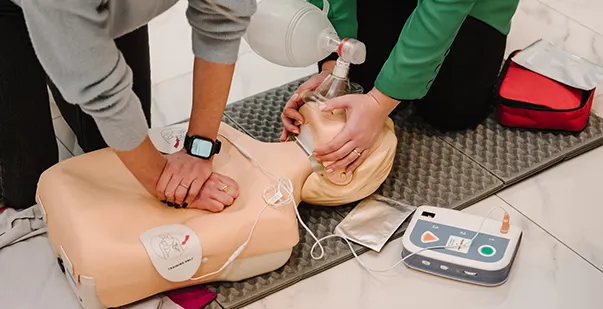When faced with a medical emergency, an Automated External Defibrillator (AED) can be a life-saving tool, especially for individuals experiencing sudden cardiac arrest. However, what are some special considerations when using an AED? Using an AED correctly is essential, but certain factors and circumstances can affect the device’s effectiveness. Understanding these special considerations will help ensure that you are prepared to use the AED properly when every second counts.
Understanding the Basics of AED Usage
An AED is a portable device designed to analyze the heart’s rhythm and provide an electric shock to restore normal heart function in cases of cardiac arrest. When using an AED, it’s important to follow the device’s voice prompts and instructions. AEDs are user-friendly, and you don’t need to be a medical professional to operate them—just ensure that you follow the correct steps.
Special Considerations When Using an AED
While AEDs are straightforward to use, there are several special considerations that can influence their effectiveness:
- Environmental Conditions: The environment in which the AED is used can play a significant role. If the victim is lying in water or on a wet surface, ensure that you clear them from the wet area and dry their chest before placing the pads. Metal surfaces should also be avoided as they may conduct electricity.
- Placement of AED Pads: The AED pads need to be placed correctly on the victim’s chest. For people with larger body types, it may be necessary to use additional or pediatric pads. Ensure the pads do not touch each other and are placed according to the device’s instructions.
- Considerations for Children and Infants: In cases involving children or infants, there are different guidelines for AED use. Many AEDs come with pediatric pads or settings that adjust the shock intensity for younger victims. It’s crucial to follow the AED’s prompts and use the right pads for the victim’s age and size.
- Safety Measures for Rescuers: Before delivering a shock, always ensure that no one, including the rescuer, is touching the victim. The AED will typically prompt you with a warning to clear the area before delivering a shock. This step is crucial to avoid any risk to the rescuer and to ensure the shock is effective.
Precautions for Specific Situations
Certain medical conditions and situations require additional precautions when using an AED:
- Medical Devices and Pacemakers: If the victim has a pacemaker or other implanted devices, avoid placing the AED pad directly over the device. Instead, position the pads around it as instructed by the device.
- AED Use During Pregnancy: While there is no conclusive evidence suggesting that AED use during pregnancy is harmful, it’s always important to follow the AED’s guidance. If you are unsure, continue with the process, as resuscitation may be necessary to save both the mother and the baby.
- Using an AED in a Moving Vehicle: If an AED needs to be used in a vehicle, ensure that the vehicle is safely stopped. Avoid using the AED while the vehicle is in motion, as the movement may affect the pad placement and the shock delivery.
Best Practices for Using an AED Safely
To maximize the effectiveness of an AED, follow these best practices:
- Always follow the AED’s voice prompts: The AED will guide you step by step through the process, from assessing the victim to delivering the shock.
- Ensure proper pad placement: Make sure the pads are correctly placed on the chest, and ensure they do not overlap or touch each other.
- Stay clear: Before administering a shock, confirm that no one is touching the victim to prevent injury.
- Do not delay: Time is critical during a cardiac arrest situation. Follow the AED’s prompts promptly and without hesitation.
Conclusion
When using an AED, what are some special considerations when using an AED is a question that every rescuer must be prepared to answer. Environmental factors, pad placement, and special medical conditions must be carefully considered to ensure the device’s effectiveness. For comprehensive training on how to use an AED and CPR, visit Simple CPR and get certified to save lives confidently.

